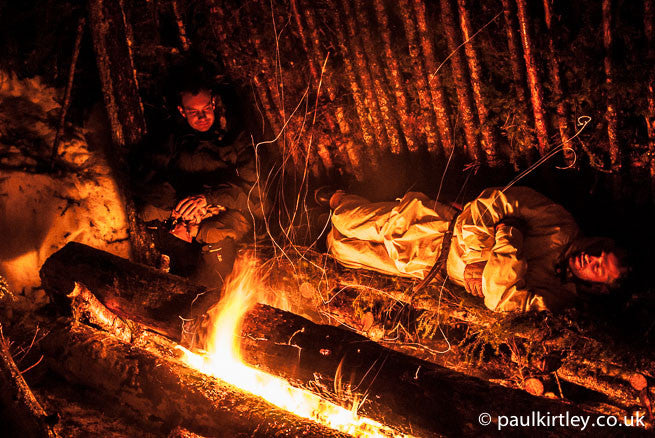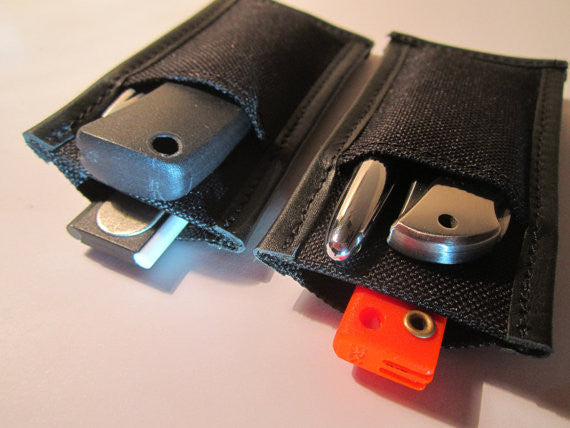How To Get Unlost in the Wild!
At some point during any good adventurer's journeys, they will become lost. In an urban environment, this is rarely a problem, just switch on the GPS on your phone, buy an AtoZ (if you are old enough and can still remember what this is) or ask for directions. In the woods, mountains, deserts and plains, these solutions may not be available to you. So if lost in the wilderness, what should you do?
When travelling and exploring, it is always highly recommendable to carry with you, a decent topographical map of the area you are travelling in, and a good quality, reliable compass which has been calibrated to the correct hemisphere. These will generally solve 99.99% of your navigational needs. Unfortunately, accidents do happen and equipment can be lost or broken. Additionally, landscape and environmental features may prevent traditional map and compass style navigation.
So, if a failure of any type occurs, what can you do?
In many cases, remaining where you are will be the sensible solution, especially if you have informed people of your whereabouts, direction of travel and expected return date (all good precautions to take if you are travelling in a wilderness setting). The theory behind this is that cars and trucks are generally much bigger than a person so are far more visible from a distance or from the air. This is why you are far more likely to be found by rescuers, if you stay with your vehicle. In fact, in the vast majority of rescue scenarios, the car/ vehicle is found first.
You may however, need to perform a self rescue, especially if, for any reason, the chances of being found are slim, for example, you have not told anyone where you are going or when you can be expected back. This is when having knowledge of navigation that does not rely on a map and compass, becomes extremely valuable.
Finding North - Particularly in woodland environments or vast, open spaces such as savannahs, where there are no visual reference points or landmarks, it is very easy to get turned around and lost. This is partially due to the fact that we have a dominant (stronger) side and leg. Therefore, without being aware of it, one step will be slightly longer and stronger than the other. Eventually, this means you can end up travelling in huge circles, by accident. Mentally, having no visual reference points can really make things tricky as your mind can and will play tricks with you.
If you are able to ascertain a cardinal direction (North, East, South or West), at least you can keep your direction of travel constant. So even if you have chosen the wrong direction to travel in, at least you won't end up doing loops. That is why leaving a note or message with details of your direction of travel can be vital for potential rescue.
Using the Sun - Roughly speaking, the Sun rises in the east and sets in the west. I say roughly speaking because, in actual fact, the Sun only rises and sets due East and due West on two days of the year (the solstices). However, as a general direction guide, the Sun can be relied upon, as long as it is visible.
Lunar Navigation - If you are in the northern hemishpere and there is a crescent moon, you are in luck. If you draw an imaginary line from the upper corner of the crescent moon to its lower corner, this will point directly south, on the horizon line. You can then ascertain which way is north, east, south, west. Similarly, if you are in the southern hemisphere, this same technique will point to North.

Using the stars - Again, if you are in the Northern hemisphere and you can find the Big Dipper (also known as the Plough), then you can find north. If you follow the line of the last two stars in the Dipper, they lead to the North Star (the brightest star in sky and the earliest rising). This star always points due north. The North Star is also known as Orion.

The southern cross- This will only work if you are in the southern hemisphere.
There are three ways to locate due south using the Southern Cross:
1. Draw an imaginary line from the top of the cross to the bottom and extend it 4.5 times. Drop a vertical line from this point, which is the South Celestial Pole (SCP), to the horizon – that place is due south.
2. Extend an imaginary line from the dimmer of the two Pointers to a lone bright star called Achernar. The South Celestial Pole is about halfway along this line. Locate south by dropping a vertical line from the South Celestial Pole to the horizon.
3. Imagine a line connecting the Pointers. Midway along this line, extend another line at a right angle to it, until it meets another line drawn down the long axis of the Southern Cross. The meeting place is the approximate location of the South Celestial Pole. Locate south by dropping a vertical line from here to the horizon.
The shadow stick method- For this technique you will need a fairly sunny day (at least enough light to cast solid shadows) and three 1 foot sticks. Place one of the sticks into the ground pointing directly to the sky. Follow the shadow created by the stick on the ground. At the tip of this cast shadow, place a second stick into the ground. Now wait at least 15 minutes but preferably half an hour. The shadow cast from the first stick will now have moved. Place the third stick into the ground where the tip of the shadow of the first stick now falls. The line between the second and third sticks is your east to west line. The first stick will signify west whilst the second stick will be pointing east. You can now work out north and south by bisecting the line.
The watch hands method- Whilst keeping your watch horizontal, point the hour hand in the direction of the sun, by turning the watch itself, not the bezel. Bisect the angle between the hour hand and the 12 o'clock mark to find South. This is the tricky part. Find the middle point of the angle between your hour hand and the 12 o'clock mark on your watch. Before noon, you'll have to measure clockwise from your hour hand to the 12 o'clock marking, while afternoon, you'll have to measure counterclockwise from your hour hand to the 12 o'clock marking. The middle point between the two marks South, while the point directly across from it marks North. Yes, this is quite a convoluted technique and may be difficult to remember in a survival situation but ultimately, it does work.
The tree moss technique - Do not use! This is a nonsense. Moss can grow on any side of tree! Yes, sometimes there will be a dominant side, in some woodland/forests, but this can easily change with varying factors such as climate, humidity, terrain, genus and more.
Follow rivers downstream - Humans need water to live. It is therefore not surprising, that the majority of human civilisation lives in close proximity to lakes, rivers, streams etc. Most rivers end up depositing into the sea and again, coastal areas are where most people live. Follow streams, tributaries and rivers to the coast.
Trailing rope technique - To ensure you are not travelling in circles whilst on foot, trail a 50 foot rope or other type of cordage behind you. Make sure the rope is arranged in a straight line behind you along the ground and over vegetation. This way you can maintain a constant direction of travel.
Landmark recognition - This is a useful technique which is a great when used in conjunction with other techniques. Simply pick out a large visible landmark (mountain range, river, the coast etc) and make sure you keep you direction of travel the same, relative to the landmark. Do not use dunes or icebergs as these can always be in a state of floe, so will not necessarily remain in the same position or in the same orientation.
Most sea birds fly out to sea to fish during the day and return to land during the evening, good to know when lost out at sea.
Conclusion - finding your way home is always possible. Don't panic, take stock of your situation and make a plan. We would recommend you always carry a detailed topographical map of the area you are travelling in, a modern GPS device, a large navigational compass and at least 1 emergency mini compass.
Make sure you tell someone where you are going, the direction or route you will take and when you can be expected back. Equally, leave notes with plans and direction of travel, for potential rescuers to find. These small safety measures could save your life.
Happy exploring!
The Bushgear Team


